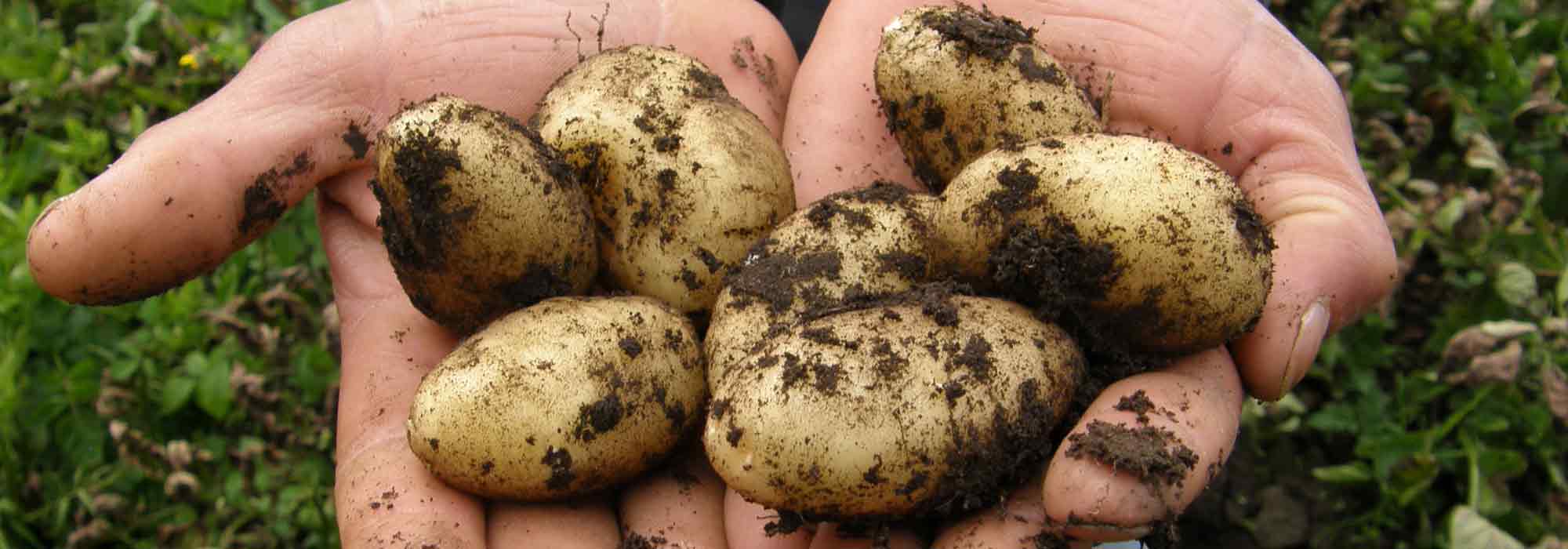
Potatoes: planting, growing, harvest
Contents
Potato in a nutshell
- The potato is a herbaceous plant from the same family as the tomato, the Solanaceae.
- Its edible tubercle is consumed cooked all over the world.
- Native to South America, it is grown as an annual.
- Easy to grow, it thrives in sunlight, and in rich, deep soil.
- The tubercle of the potato is rich in vitamins and minerals.
- All parts of the plant are toxic, even the tubercle if it has sprouted or turned green.
A word from our expert
The Potato, Solanum tuberosum in Latin, is a stem vegetable (commonly associated with root vegetables), belonging to the Solanaceae family.
Originating from South America, the potato is a perennial plant that we grow as an annual in our latitudes. It is indeed easy to grow in rich, light, well-drained soil, and in a sunny location.
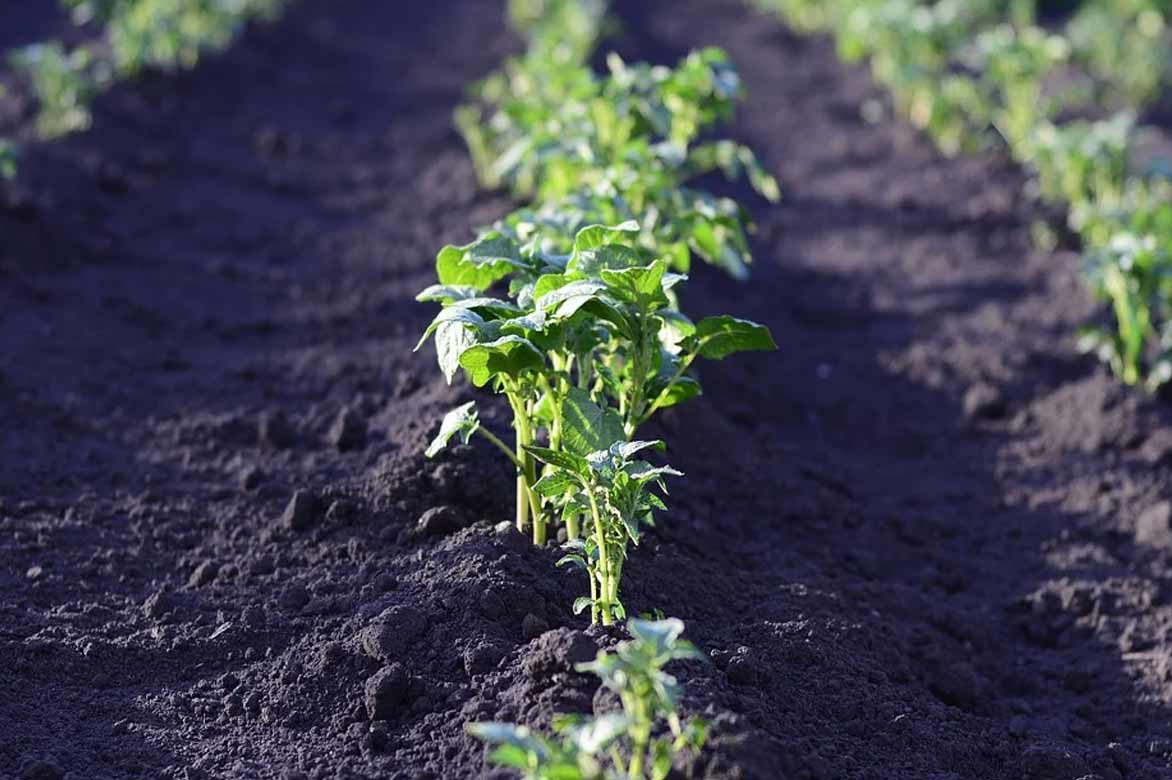
Highly productive, there are many varieties of potatoes, ranging from early to late types. We count three main categories: firm-fleshed varieties, floury potatoes, and those with a soft flesh.
The edible tubercle is rich in carbohydrates, potassium, magnesium, and fibre. These qualities make it one of the staples of our vegetable gardens and plates. Always consumed cooked, there are hundreds of potato recipes.
Description and botany
Botanical data
- Latin name Solanum tuberosum
- Family Solanaceae
- Common name tuberous nightshade, potato, parmentier, spud, tartufle, truffle
- Flowering June to September
- Height 50 cm to 1 m
- Exposure sunny
- Soil type light, rich, slightly moist
- Hardiness not hardy
The potato, commonly known as spud, originates from the Andes mountains in South America, cultivated in this region of the world for nearly 8,000 years. It was only introduced to Europe towards the end of the 16th century.
A herbaceous plant, Solanum tuberosum belongs to the Solanaceae family, just like the tomato. The term potato refers to both the edible tuber and the plant itself.
The potato has an upright habit and can reach up to 1 m in height. Its highly ramified root system is capable of penetrating the soil to a depth of 0.8 m. The leaves are compound, deciduous, alternate, and measure between 10 and 20 cm long.
The potato has fleshy aerial stems, green, or occasionally reddish-purple, on which the foliage unfolds, and underground stems, the rhizomes, on which the tubers form. Botanically speaking, it is therefore a stem vegetable, with tubers being transformed underground stems, not roots. The tubers are nutrient storage organs. Their size, shape, and colour can vary depending on the variety. Generally, the skin of the tuber is yellow, but it can also be red, black, or pink. Similarly, the flesh is often white or more or less yellow, but it can also be pink or purple depending on the variety.
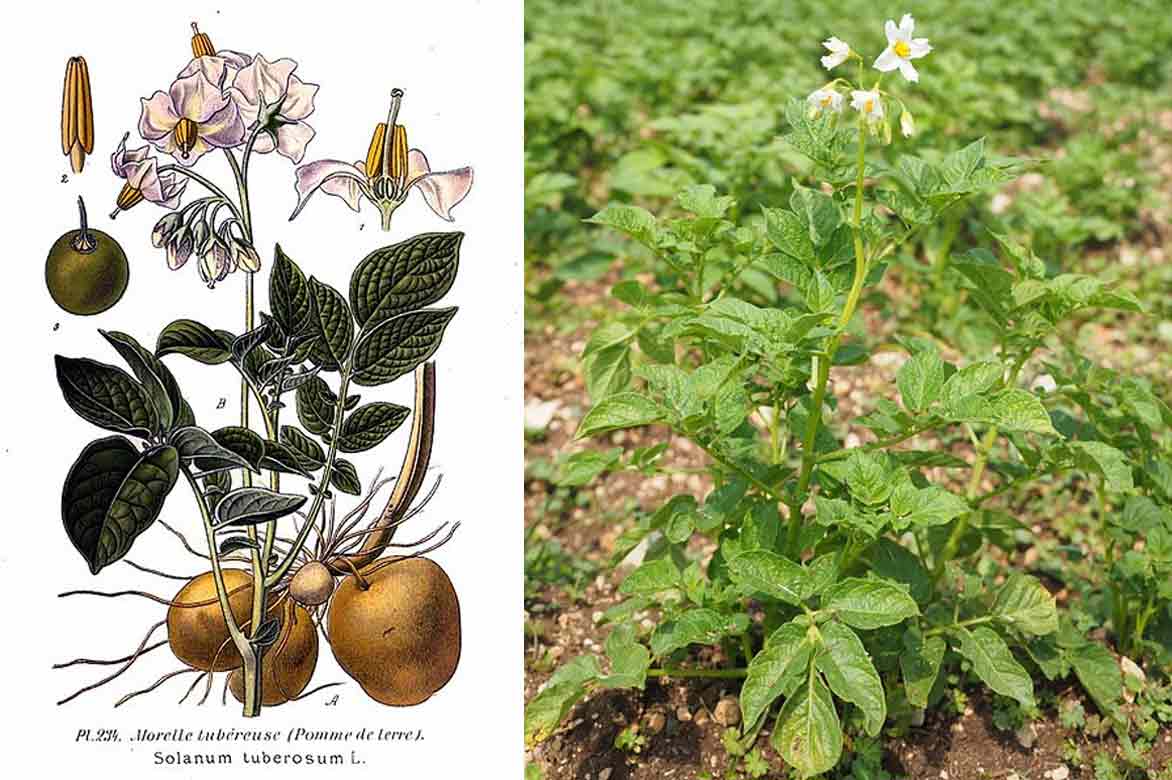
The inflorescence of the potato is located at the tip of the stem and consists of between 1 and 30 flowers depending on the cultivars. These flowers, 3 to 4 cm in diameter, have a corolla white, blue, purple, or even violet, with yellow stamens.
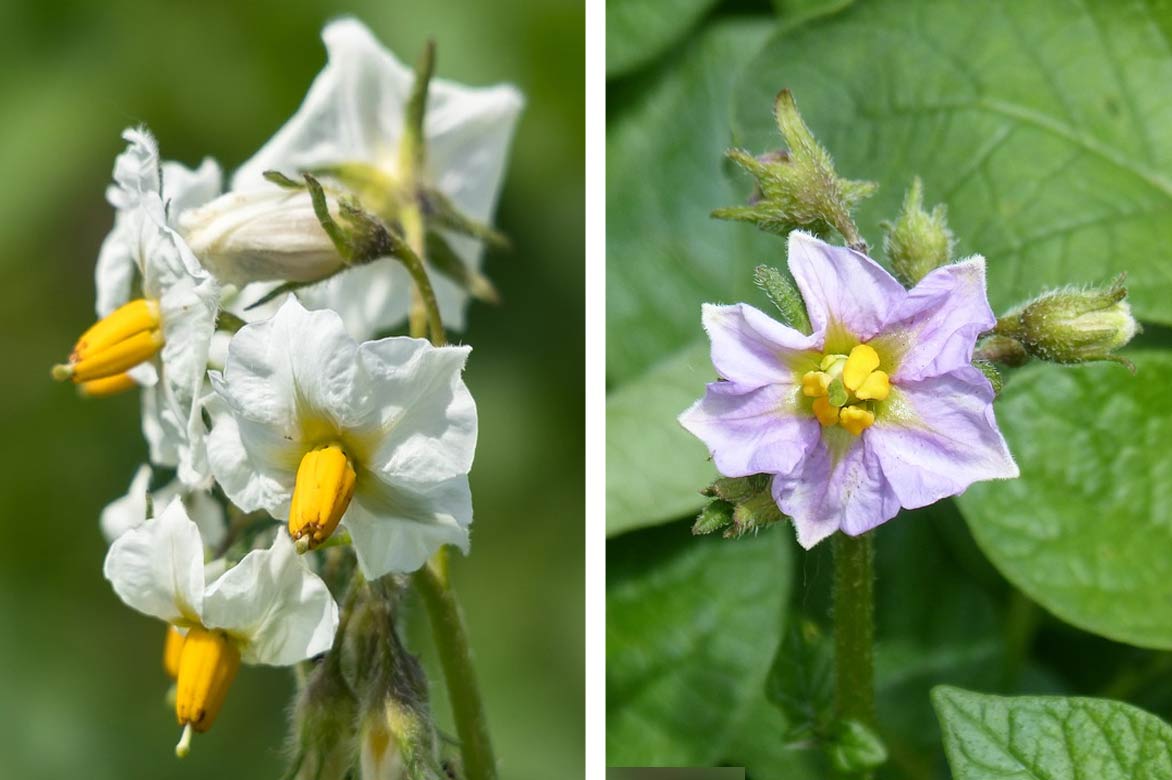
The potato produces seeds through self-fertilization. Fruiting takes the form of berries that are spherical, elongated, or ovate, measuring 1 to 3 cm, and can be green, yellowish, reddish-brown, or purple. These berries are very similar to small tomatoes, but they are toxic, as is the rest of the plant (including sprouted or green tubers). The berries, grouped in terminal clusters, contain between 200 and 400 flattened seeds that are oval or kidney-shaped, white, yellow, or brownish-yellow.
Read also
Growing Potatoes on GrassMain species and varieties
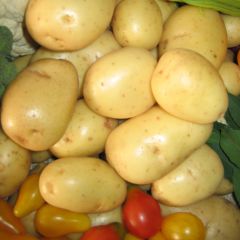
Potatoes Mona Lisa
- Height at maturity 60 cm
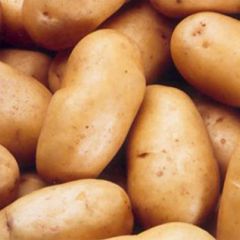
Solanum tuberosum 'Charlotte'
- Height at maturity 60 cm
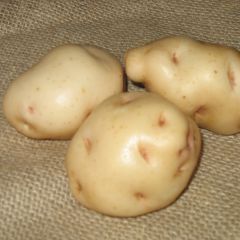
Potatoes Institut de Beauvais
- Height at maturity 60 cm
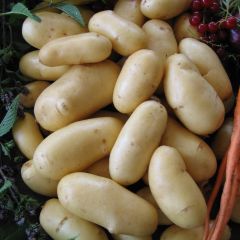
Solanum tuberosum 'Belle de Fontenay'
- Height at maturity 60 cm
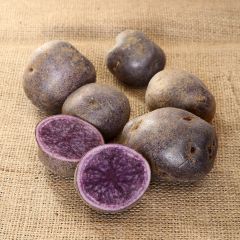
Potatoes Blue d'Artois
- Height at maturity 60 cm
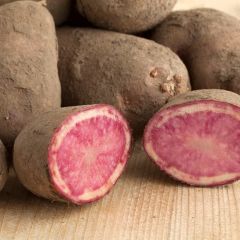
Potatoes Rouge des Flandres
- Height at maturity 60 cm
Discover other Seed potatoes
View all →Available in 0 sizes
Available in 1 sizes
Available in 0 sizes
Available in 2 sizes
Available in 1 sizes

Available in 1 sizes
Available in 3 sizes
Available in 1 sizes
Available in 1 sizes

Available in 1 sizes
Potato planting
Where to plant potatoes?
Potatoes thrive in deep, rich soils with humus, as well as sunny locations. Therefore, the chosen site should be well-exposed to light, ideally receiving full sun.
Also, ensure to respect crop rotation to prevent the spread of diseases. Previous cereals (such as wheat) are generally the most favourable for potato cultivation.
When to plant potatoes?
Under cover, early potatoes that have sprouted can be planted as early as February. Other varieties are planted in open ground between mid-March and May, in soil at 10°C.
How to plant potatoes?
There are three main methods for growing potatoes: traditional hilling, mulched cultivation, and tower planting (or bag cultivation).
Traditional planting
With this method, potato tubers are buried in the soil.
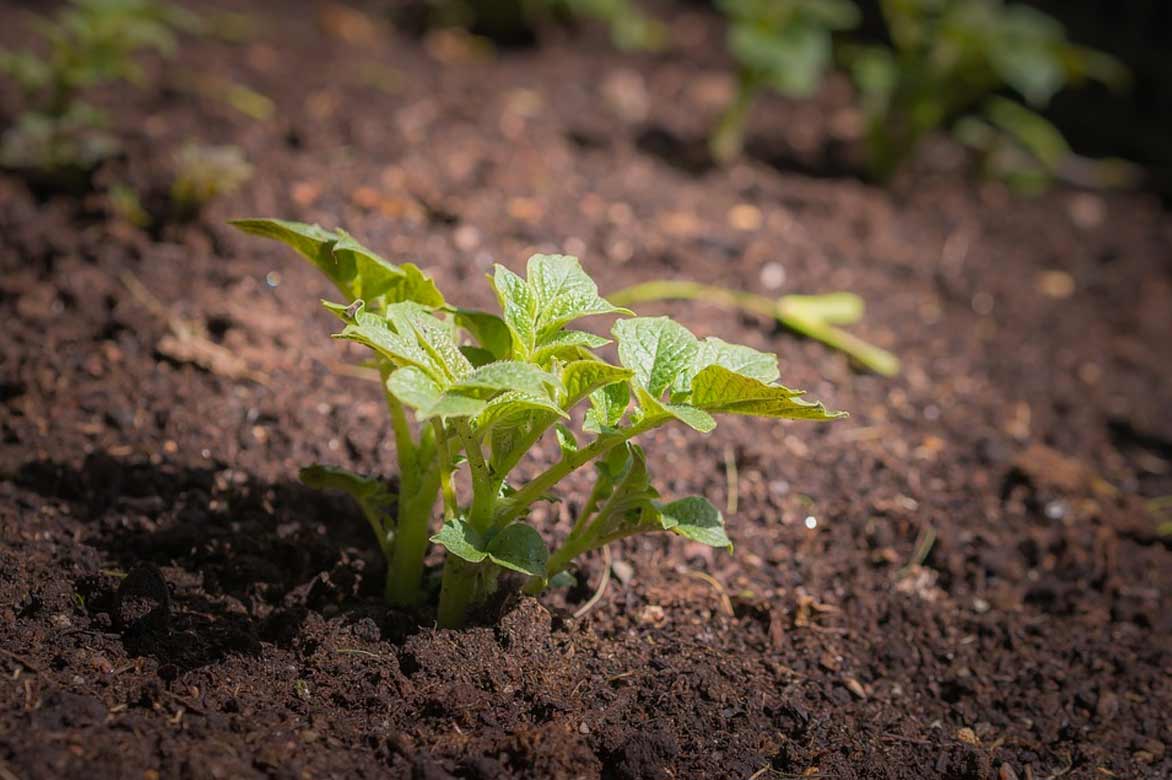
- In the autumn preceding potato planting, ensure to loosen the soil before adding well-matured compost by raking it in to a depth of 5 cm. Use at least 3 kg of compost per m2 of soil.
- To hasten the harvest, the potatoes should have already sprouted. In January, place the tubers in trays set in a bright, cool, frost-free room.
- In the following spring, once the risk of frost has passed, create furrows spaced 50 to 70 cm apart in the soil, and plant the sprouted tubers at a depth of 10 cm, spacing them 35 to 40 cm apart. Gently cover them with a few cm of soil, without compacting too much, and water if the weather is dry.
- About two weeks later, once the plants are well-developed, hill the stems for the first time by bringing soil over the potatoes to form a mound. This operation should be repeated once or twice during their growth.
- Water in case of prolonged drought.
Mulched planting
This planting technique involves placing the tubers on the soil before covering them with a thick layer of mulch. To shield them from light throughout their growth, this mulch should be regularly renewed. This cultivation method is known for its higher productivity compared to traditional hilling. It also facilitates harvesting, as potatoes can be collected by hand without any tools. Consequently, this prevents damage to the tuber, ensuring better long-term storage of the potatoes. However, your mulch may attract voles, which are fond of vegetables.
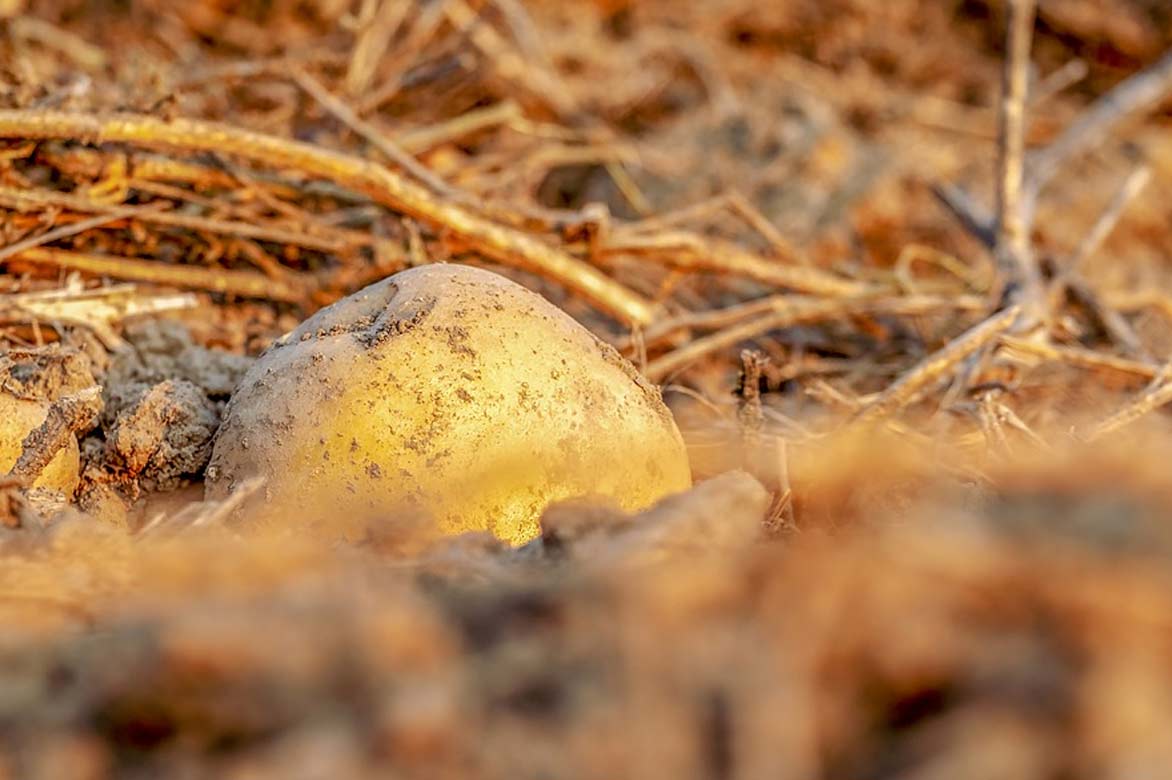
- Start by germinating the potatoes using the same technique mentioned earlier.
- In spring, define and mow the grassy area designated for potato cultivation.
- Place the sprouted tubers directly on the lawn, spacing them 30 cm apart for early varieties, and 40 to 50 cm for maincrop potatoes.
- Sprinkle a bit of compost mixed with garden soil directly over the tubers.
- Cover with a mulch 15 cm thick, made of dry material (such as straw, dry grass, etc.) mixed with compost. Note: never use fresh grass clippings.
- Top it all off with a good layer of dry mulch from grass clippings, straw, fallen leaves, or ramial chipped wood (RCW).
- Water lightly at planting, then only in case of prolonged heat.
Note: With this method, you are not required to plant in rows.
Tower planting
Planting potatoes in bags or towers is an effective method for growing this vegetable in a small space, such as a balcony, terrace, courtyard, or even a small garden. It is indeed a very productive soilless cultivation technique, ideal for urban gardening.
- Once again, planting should be done using previously sprouted potato tubers.
- Get a very tall plastic bag, and poke several holes in the bottom. Fold down the edges of the bag to keep it open and shorten it.
- Fill the bag with 5 to 10 cm of well-matured compost, place a sprouted potato in it, then cover it with a new layer of compost.
- When the stems and leaves of the plant reach a height of 8 to 10 cm, unfold the edges of the bag and refill it with compost. Repeat this process as your potato plants grow, without ever covering their top leaves.
- Water the substrate regularly.
Read also
When and how to earth up potatoes?Harvest, storage and use
Harvesting
New potatoes are harvested before they reach full ripeness, when their flowers fade. For other varieties, however, wait until the leaves turn yellow.
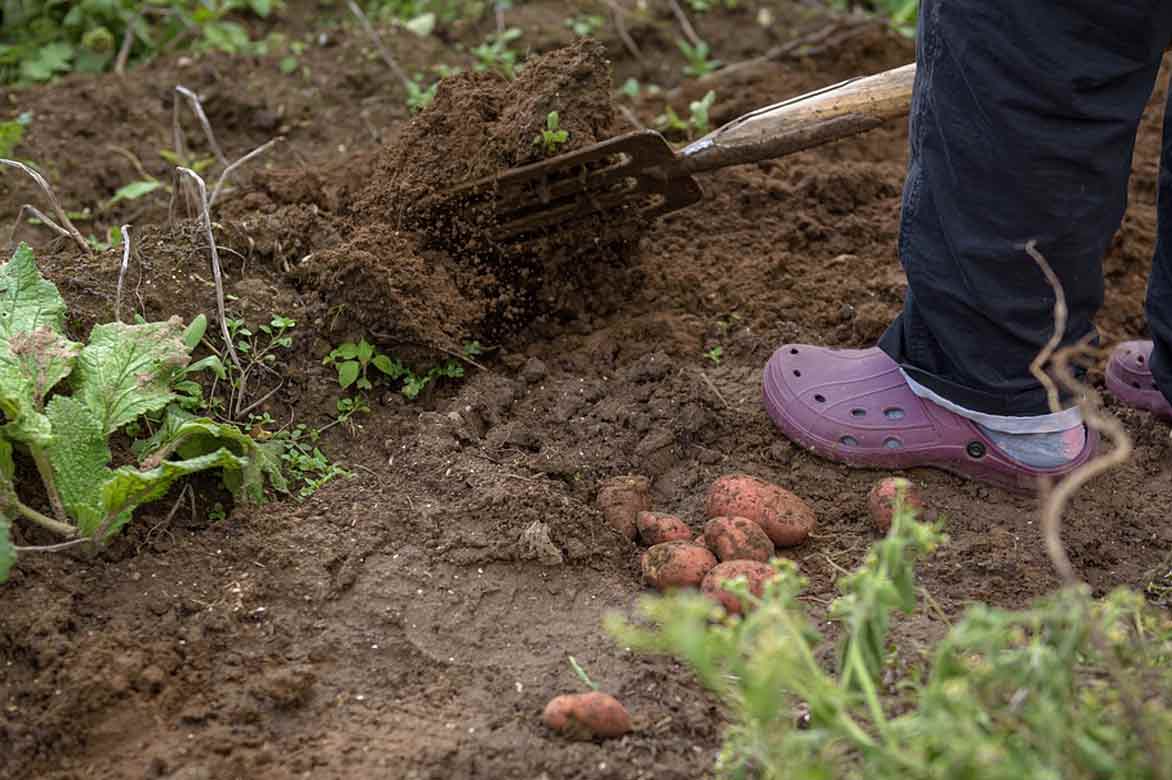
Harvest on dry days, preferably when no rain is expected for several days.
Use a fork or a non-pointed spade, and gently lift the potato plants. Proceed carefully to avoid damaging the tubercles. If you opted for a mulch planting, simply lift the straw to “pick” the tubercles by hand.
Tip: to ensure the best storage conditions, leave the potatoes to dry in the sun for 24 to 48 hours.
Storage
Some varieties of potatoes are particularly suited for long-term storage of several months, such as ‘Désirée’, ‘Nicola’, and ‘Samba’.
Place the tubercles in a jute bag or a wooden crate, and store them in a dry, cool, dark, and ventilated room.
Culinary uses
Baked, steamed, or boiled potatoes… this tubercle must always be cooked before consumption. Mashed, shepherd’s pie, Swedish potatoes, chips, salads… There is an incredible variety of potato recipes that can be adapted endlessly.
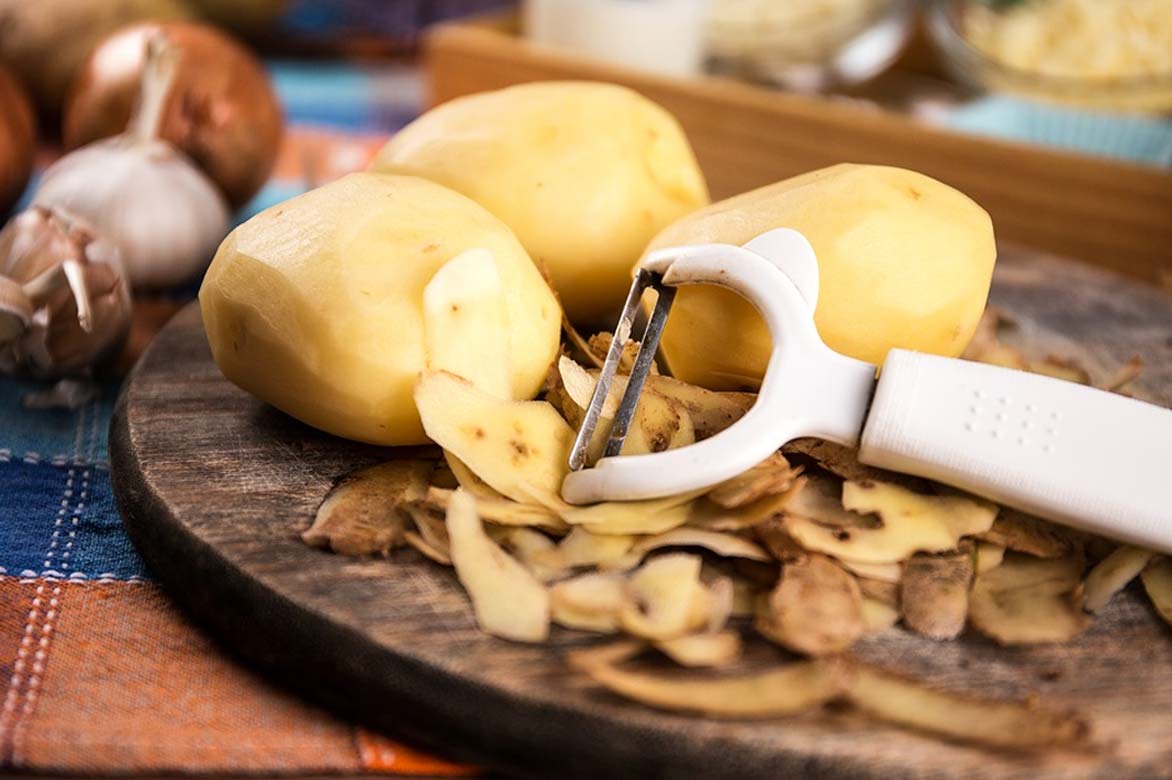
Not all varieties are suitable for the same preparations. It is important to distinguish between the different categories of potatoes:
- Firm-fleshed varieties, which hold up well when boiled or steamed, are ideal for salads, prepared in their skins, or sautéed.
- Tender-fleshed potatoes also hold up well when boiled or steamed, and are perfect for mashes, gratins, and baking.
- Floury varieties do not hold up as well when boiled or steamed, making them perfect for soups, gratins, and mashes, as well as chips due to their low oil absorption capacity.
Virtues and benefits
The potato is rich in carbohydrates, as well as potassium, magnesium, and fibre. It is therefore a complete vegetable that, when combined with a varied diet, contributes to a good nutritional balance.
It is noted that the cooking method of the potato impacts its qualities. When boiled, it is richer in potassium and diuretic. It also provides more vitamin C when baked. It even has anti-scurvy properties, as scurvy is a disease linked to a deficiency of vitamin C in the diet. Steamed potatoes contain the potassium and magnesium necessary for muscle cell contraction.
As long as it is not fried in fat, the potato is a dietary food that can be perfectly integrated into a low-calorie diet.
It is also recognised for its soothing properties against gastric pain.
Potato care and maintenance
Hilling potatoes
If you have opted for traditional planting, you need to hill your potato plants once or twice during their growth. Hilling helps promote the formation of tubercles and limits their greening in the light.
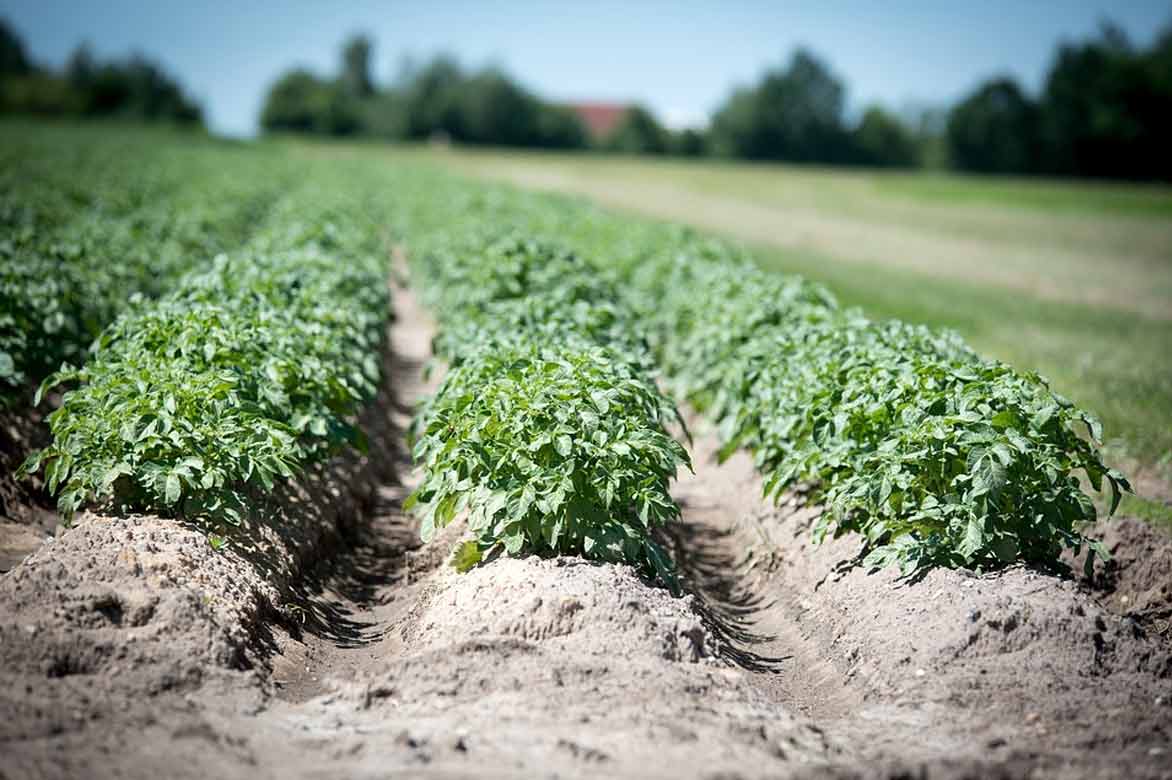
When the potato plants reach a height of 25 cm, bring soil from their base to form a mound. Use a rake or hoe for this, being careful not to dig too deep, as this could damage the roots. Be sure to leave 10 cm of vegetation above the soil. Repeat the operation about fifteen days to a month later.
Weeding potatoes
If your potato plants are not protected by a good layer of mulch, you will need to weed regularly to prevent the proliferation of adventive plants.
Watering potatoes
Not very thirsty, potatoes generally do not need to be watered, unless the weather remains dry for a long time, and flowering is underway.
Water preferably in the evening to promote water absorption by the plants. Be careful to direct your watering at the base of the mounds, avoiding wetting the foliage, which will limit the risk of fungal diseases.
Diseases and potential pests of the potato
As with all solanaceae, the potato is susceptible to downy mildew. This is a fungal disease that thrives in warm, humid conditions. To prevent it, practice crop rotation and choose varieties resistant to this disease. Bordeaux mixture also serves as an effective preventive and curative treatment against downy mildew.
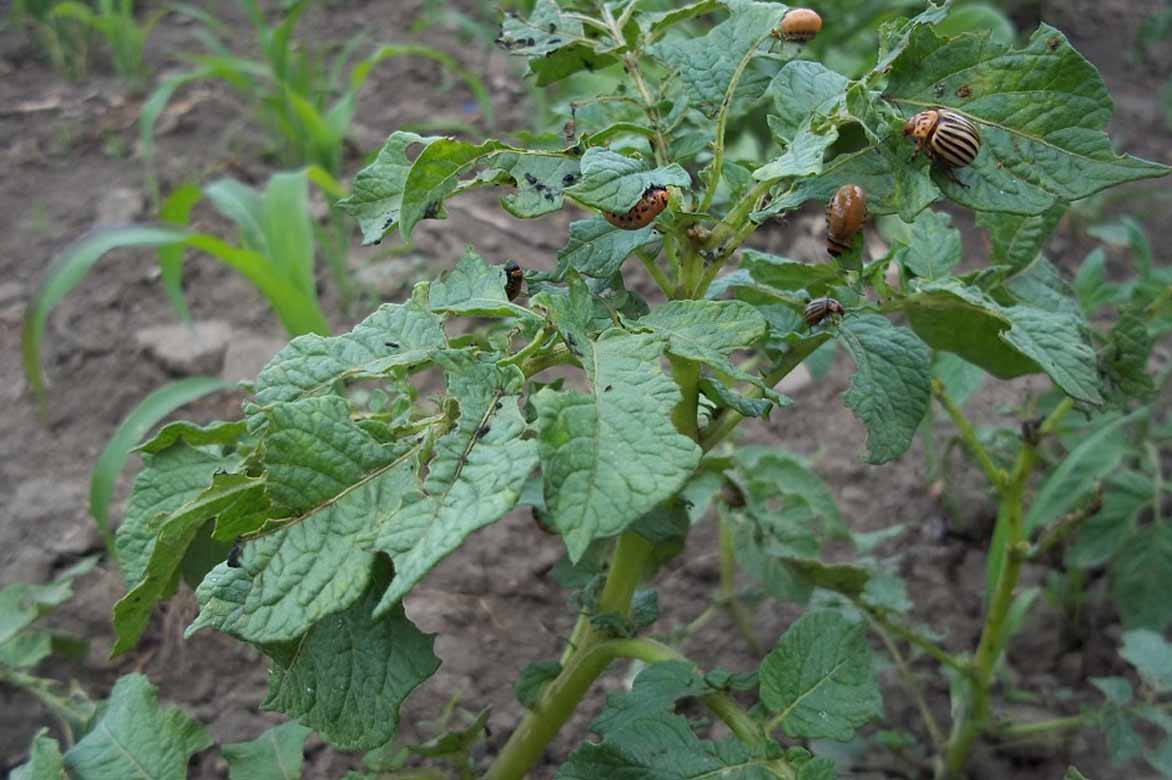
The Colorado potato beetle is the main pest of the potato. Sowing flax near your plants can help keep them away from the vegetable garden. Natural insecticides based on pyrethrum also provide a good treatment against this type of attack.
→ Learn more about diseases and pests of the potato and about the common scab of the potato in Pascale’s articles.
Propagating potatoes
Potato never multiplies by sowing, as the tubercles obtained using this technique are often unusable, being too small. Potato reproduces therefore exclusively by planting sprouted tubercles.
Pairing potatoes
To deter predators from the potato, specifically the Colorado beetle and nematodes, pair it with flax, cosmos, wormwood, and garlic.
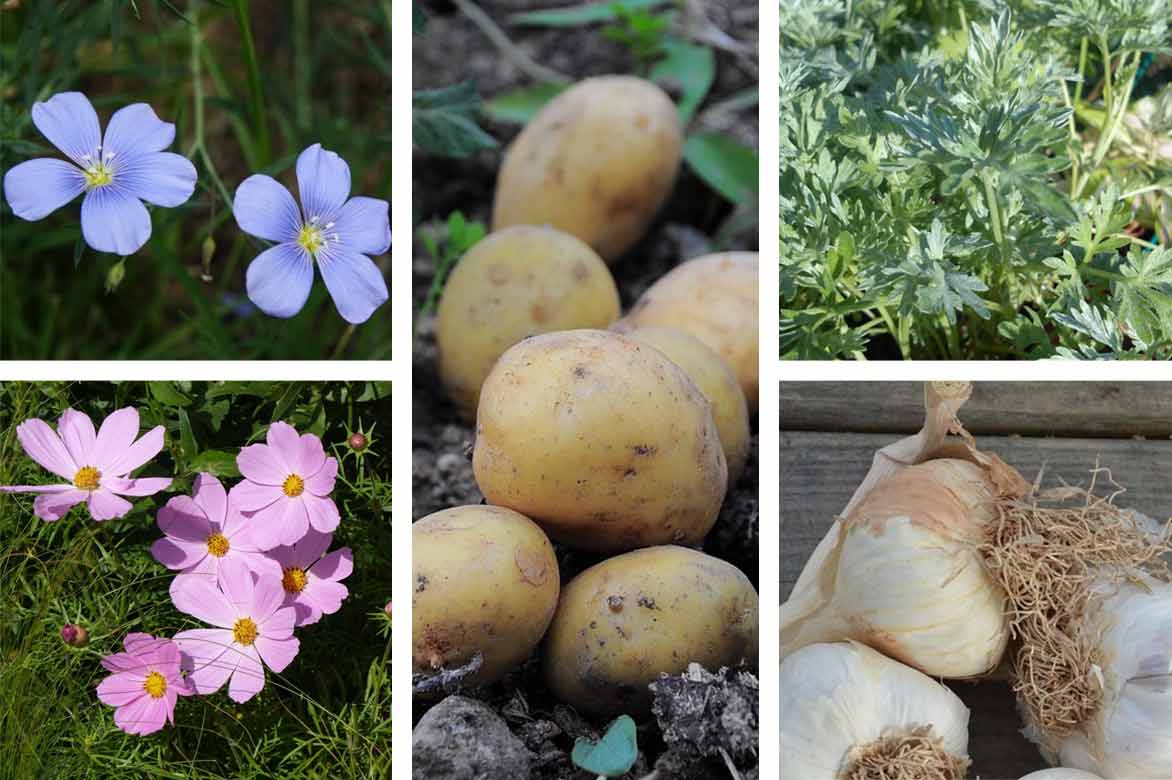
In the vegetable garden, potatoes also grow very well near corn, cabbage, and legumes, such as peas, broad beans, and beans. However, never plant potatoes near other solanaceous plants, such as tomatoes, peppers, or aubergines.
Useful resources
- Not sure which varieties to grow? Ingrid shares her expert insights to help you choose your potato plants, while Pascale advises on potatoes for chips.
- For further reading, learn how to grow, harvest, and store potatoes, and find all our detailed advice on planting your potatoes.
- Are you intrigued by the method of growing potatoes on grass? Pascale provides all the keys to ensure your productivity.
- Finally, earthing up potatoes is a technique that will hold no secrets for you thanks to Servane’s advice.
- Pascale explains how to make vegetable crisps, when to buy potatoes, the best late potatoes, a guide to choosing and growing early potatoes, and provides you with potato varieties for baking and potato varieties for steaming.
- Ingrid offers all the advice you need to grow new potatoes and germinate potatoes.
- Subscribe!
- Contents































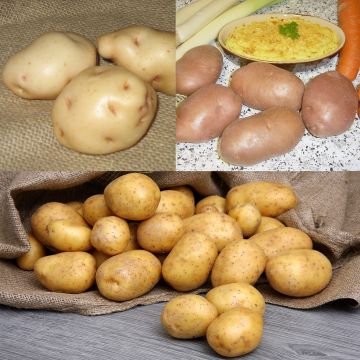
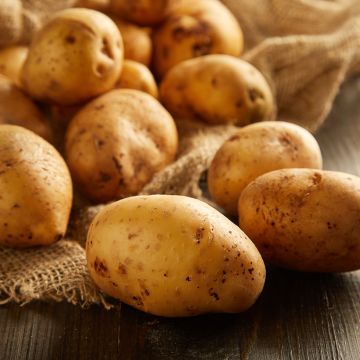
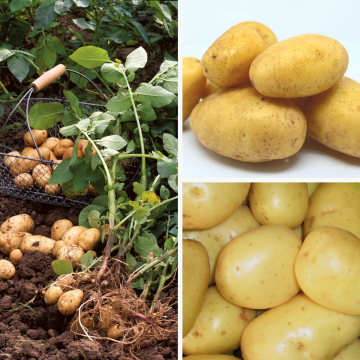
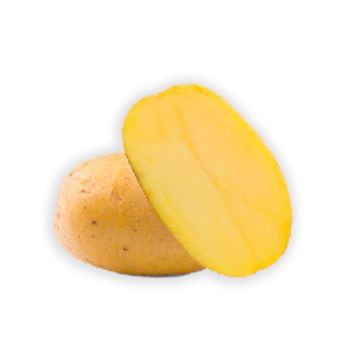
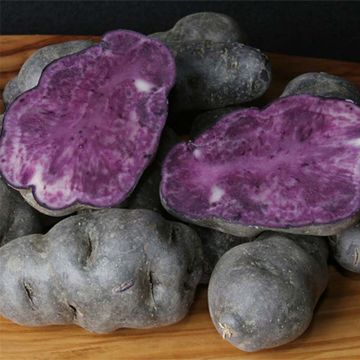

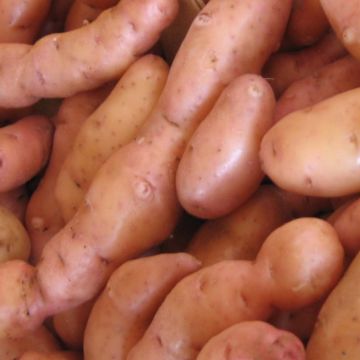
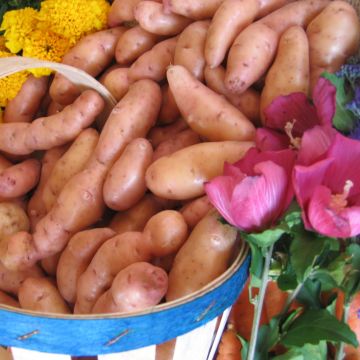
Comments